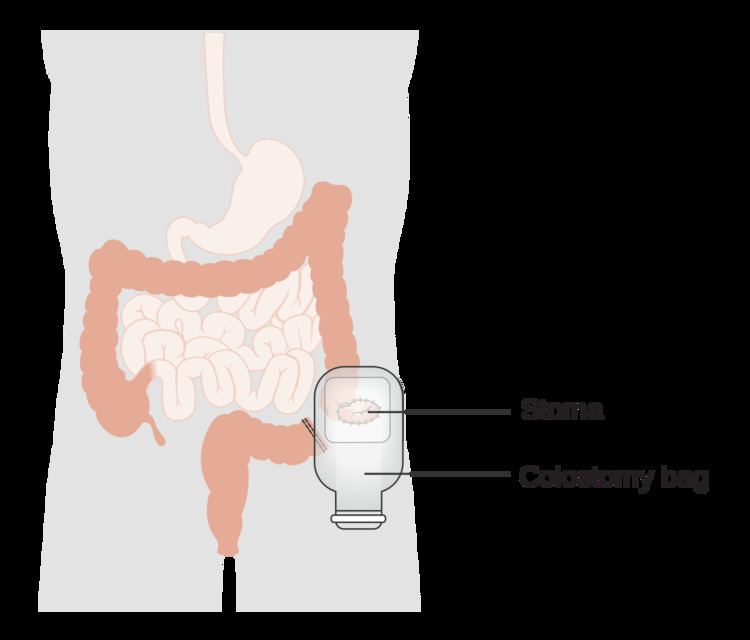ICD-9-CM 46.1 MedlinePlus 002942 | MeSH D003125 | |
 | ||
A colostomy is a surgical procedure in which an opening (stoma) is formed by drawing the healthy end of the large intestine or colon through an incision in the anterior abdominal wall and suturing it into place. This opening, in conjunction with the attached stoma appliance, provides an alternative channel for feces to leave the body. It may be reversible or irreversible depending on the circumstances.
Contents
Indications
There are many reasons for this procedure. Some common reasons are:
Options
Placement of the stoma on the abdomen can occur at any location along the colon, but the most common placement is on the lower left side near the sigmoid where a majority of colon cancers occur. Other locations include the ascending, transverse, and descending sections of the colon.
Types of colostomy:
Colostomy surgery that is planned usually has a higher rate of long-term success than surgery performed in an emergency situation.
People with colostomies must wear an ostomy pouching system to collect intestinal waste. Ordinarily the pouch must be emptied or changed a couple of times a day depending on the frequency of activity; in general the further from the anus (i.e., the further 'up' the intestinal tract) the ostomy is located the greater the output and more frequent the need to empty or change the pouch.
Colostomy with irrigation
People with colostomies who have ostomies of the sigmoid colon or descending colon may have the option of irrigation, which allows for the person to not wear a pouch, but rather just a gauze cap over the stoma, and to schedule irrigation for times that are convenient. To irrigate, a catheter is placed inside the stoma, and flushed with water, which allows the feces to come out of the body into an irrigation sleeve. Most colostomates irrigate once a day or every other day, though this depends on the person, their food intake, and their health.
Alternatives
A man in the UK has been given a remote-controlled bowel. Colostomy or ileostomy is now rarely performed for rectal cancer, with surgeons usually preferring primary resection and internal anastomosis, e.g. an ileo-anal pouch. In place of an external appliance, an internal ileo-anal pouch is constructed using a portion of the patient's lower intestine, to act as a new rectum to replace the removed original.
Routine care
A pouch that can be drained is usually emptied when it is one third full. A pouch is replaced usually every 3 to 7 days or whenever the seal comes off, for which it should be replaced immediately.
Complications
Parastomal hernia is the most common late complication of stomata through the abdominal wall, occurring in 10 to 25% of the patients.
